
| Therapeutic Area(s) | Ophthalmology |
Dry eye syndrome, also known as keratoconjunctivitis sicca (KCS), is a common eye disorder where the eyes don’t make enough tears.

| Therapeutic Area(s) | Respiratory | Others |
COPD is a broad term used for progression of various diseases affecting the lungs such as, chronic bronchitis, some forms of bronchiectasis, emphysema and refractory (non-reversible) asthma.

| Therapeutic Area(s) | Neurology | Others |
Alzheimer’s disease is a progressive brain disorder that is caused by the loss of brain cells and degeneration of brain tissues. It is the most common cause of dementia and leads to deterioration in thinking, behavioral, and social skills.
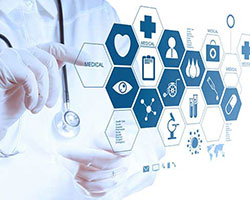
| Therapeutic Area(s) | Others |
Hereditary angioedema (HAE) results in excessive swelling of skin as well as mucous membrane. The disease majorly affects three parts of a body: skin, respiratory tract, and gastrointestinal tract.

| Therapeutic Area(s) | MusculoskeletalOthers |
Spinal muscular atrophy (SMA) is a rare inherited genetic disease that occurs due to loss of nerve cells, known as motor neurons.

| Therapeutic Area(s) | InfectiousOthers |
Candidiasis is an infection caused by a common type of fungus or yeast called Candida albicans, which is normally found in the mouth, skin, vagina, stomach, and intestines.

| Therapeutic Area(s) | OncologyOthers |
Rectal cancer refers to formation of malignant cells inside the rectum. This type of cancer develops over several years, first growing as a polyp, which is precancerous growth. Whereas, some polyps can turn into cancer.

| Therapeutic Area(s) | InfectiousOthers |
Peanut allergy is a common type of food allergy that can cause severe allergic reaction, which can result in anaphylaxis. Even a small amount of peanut can cause symptoms of allergy in patient.

| Therapeutic Area(s) | ImmunologyOthers |
Sjögren’s syndrome is referred to a chronic, autoimmune disease characterized by lymphocytic infiltration of exocrine glands and epithelia that leads to symptoms such as dry eyes and dry mouth.

| Therapeutic Area(s) | MusculoskeletalOthers |
Sarcopenia is an age-related disease, leading to significant loss of muscles after a particular age. Though there is a constant loss of muscles in the body after the age of 30, but it starts accelerating when a patient approaches seventh decade of the life.

| Therapeutic Area(s) | Others |
Cushing’s syndrome is a result of overproduction of cortisol hormone, which helps to maintain of stress level and blood pressure, regulate blood glucose, and reduce inflammation.
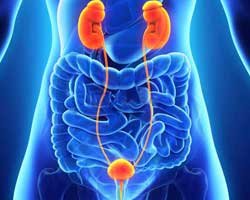
| Therapeutic Area(s) | UrologyOthers |
Urinary tract infection (UTI) is an infection of bladder, urethra, ureter, and kidney. The most common symptom of the disease is burning sensation during urination.

| Therapeutic Area(s) | Immunology | Others |
Systemic lupus erythematosus (SLE) is a chronic disease that leads to inflammation of cartilage and blood vessels. Some common symptoms of the disease include pain and swelling in joints, unexplained fever, sensitivity to sun, joints and muscle pain, swollen glands, and mouth ulcers.

| Therapeutic Area(s) | Infectious | Others |
Methicillin-resistant Staphylococcus aureus (MRSA) is an infection caused by Staphylococcus aureus (staph bacteria), a type of bacteria, which are resistant to several antibiotics and are able to survive in our body.
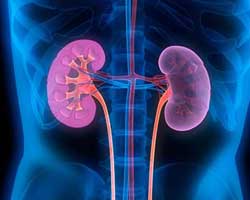
| Therapeutic Area(s) | Nephrology | Others |
AKI or acute kidney failure is a condition which occurs due to sudden injury in kidneys and results in the minor or complete loss of their function. The causes of AKI can be divided into three categories: prerenal, intrinsic, and postrenal.
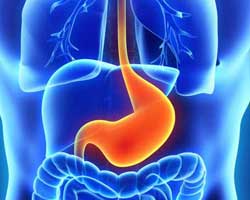
| Therapeutic Area(s) | Gastroenterology | Others |
Ulcerative colitis (UC) is a disease of colon or large intestine, which leads to inflammation of the colon and development of tiny sores that produce mucous or pus. The disease happens due to dysfunction of immune system.

| Therapeutic Area(s) | Musculoskeletal | Others |
Synovial sarcoma is a rare form of soft-tissue sarcoma, which accounts for 5–10% of all soft-tissue tumors in the world. It is further divided into four stages (I, II, II, and IV), depending on the size of tumor.

| Therapeutic Area(s) | Musculoskeletal | Others |
Rhabdomyosarcoma (RMS) is a rare type of cancer, mostly happening in soft tissues or hollow organs such as bladder or uterus. The disease affects children most of the times, and starts in head and neck area, urinary bladder, vagina, uterus or testes, arms, and legs.

| Therapeutic Area(s) | Ophthalmology | Others |
Retinitis pigmentosa (RP) is identified as a group of rare genetic disorders associated with the breakdown and loss of cells in the retina. The commonly occurring symptoms include loss of peripheral or central vision and affected night vision.

| Therapeutic Area(s) | Oncology | Others |
Pancreatic cancer is marked by development of malignant cells in the pancreas, resulting in the formation of tumor. The disease is further classified into two main groups: endocrine and exocrine tumors. Endocrine tumors, also known as islet cell tumors or neuroendocrine tumors, are less common and most often benign. On the other hand, exocrine tumors or adenocarcinomas forms in the pancreas ducts.

| Therapeutic Area(s) | Nephrology | Others |
Polycystic kidney disease (PKD) is a genetic disease that causes cysts to develop in kidney. These cysts are filled with fluid and lead to enlargement of kidney and subsequent loss of its functioning, which eventually causes kidney failure.

| Therapeutic Area(s) | Oncology | Others |
Oral mucositis (OM) is the most common side-effects of cancer treatment (chemotherapy and/or radiotherapy), and occurs usually in the people suffering from head and neck cancer.

| Therapeutic Area(s) | Neurology | Others |
Neurofibromatosis (NF) is a genetic disorder that leads to the development of tumors on various nerve tissues. These are usually benign, but it can turn malignant in some cases.

| Therapeutic Area(s) | Neurology | Others |
Friedreich’s Ataxia (FRDA) is an inherited disease of the central nervous system. It is the most common autosomal recessive ataxia caused by an abnormality of a single gene called the Frataxin FXN gene.

| Therapeutic Area(s) | Urology | Others |
Prostatitis can be identified as an inflammatory condition causing pain in prostate gland. It is one of the most common problem related to urinary tract in men younger than 50 years.

| Therapeutic Area(s) | Neurology | Others |
Post-traumatic stress disorder (PTSD) is a neurological disorder that develops in people who have experienced a shocking, scary, or dangerous event. It usually occurs more often in women than in men.

| Therapeutic Area(s) | Neurology | Others |
Post-operative pain is a very common problem after any surgery and it is necessary to treat the same effectively, so that the patient feels more comfortable. According to the American Society of Anesthesiologist practice guidelines for acute pain management in the perioperative setting, acute pain is defined as pain that is present in a surgical patient after a procedure.
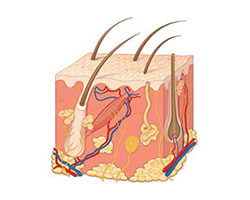
| Therapeutic Area(s) | Dermatology | Others |
Androgenetic alopecia is a genetic medical condition, which leads to pattern hair loss in both male and female. A pattern of “M” shaped is commonly seen in patients, followed by thinning of hair over the crown.

| Therapeutic Area(s) | Ophthalmology | Others |
Presbyopia can be identified as an ophthalmic disorder which develops with age, and affects the visual ability to nearby objects clearly. This is mainly because the lens behind the iris which helps in focusing on near as well as far objects, loses its flexibility with increasing age and becomes more rigid.

| Therapeutic Area(s) | Gastroenterology | Others |
Constipation refers to an irregular bowel movement, which is characterized by lumpy and hard stool, pain in passing the stool, and feeling of incomplete emptying. Additional implications of constipation include hemorrhoids anal fissure, rectal prolapse, and fecal imprecation.
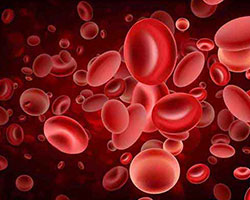
| Therapeutic Area(s) | Hematology | Others |
Hemochromatosis, also known as iron overload, is characterized by iron accumulation in human body. Some of the major symptoms of hemochromatosis/iron overload include weight loss, joint pain, erectile dysfunction in men, and irregular menstrual cycle in women.

| Therapeutic Area(s) | Neurology | Others |
Progressive supranuclear palsy (PSP), also known as Steele-Richardson-Olszewski syndrome, is a rare brain disorder, which affects behavior and thinking capability of an individual.

| Therapeutic Area(s) | Ophthalmology | Others |
Uveitis can be identified as a range of inflammatory conditions causing pain in the middle layer of the eye, uvea. However, it is not limited to uvea, but also affects retina, lens, optic nerve, and vitreous humor. Due to this disorder, eyes appear red and swollen.

| Therapeutic Area(s) | Oncology | Others |
MF is a rare disease identified by the presence of excessive scar tissues in bone marrow that decreases the hematopoietic capacity of the bone marrow. The genetic mutation in the blood stem cells causes MF.

| Therapeutic Area(s) | Musculoskeletal | Others |
MG is a neuromuscular disorder, which is characterized by muscle weakness and muscle fatigue. The disease becomes apparent during adulthood, but symptoms may occur at any age.
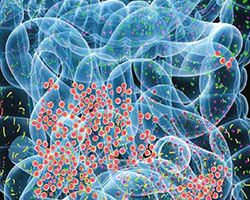
| Therapeutic Area(s) | Metabolic | Others |
LSD refers to inherited metabolic disorders, which are characterized by enzyme deficiencies. Metachromatic leukodystrophy; Mucolipidosis types I, II/III, and IV; Mucopolysaccharide storage disease; Gaucher disease; Fabry disease; Niemann-Pick disease; Schindler disease types I and II; Tay Sachs disease; Pompe disease; and Sandhoff disease are some of the most common types of LSD.

| Therapeutic Area(s) | Infectious | Others |
JE virus is one of the leading causes of vaccine-preventable encephalitis in the Western Pacific and Asia. It is characterized by inflammation in brain. Additional implications of the disease include headache, disorientation, high fever, coma, convulsions, and tremors.

| Therapeutic Area(s) | Dermatology | Others |
Hyperhidrosis is a condition in which a person starts sweating excessively. People suffering from hyperhidrosis experience excessive sweating from their palms, heads, feet, or underarms.

| Therapeutic Area(s) | Dermatology | Others |
Hypertrophic scar can be identified as a thickened and raised scar that develops at the site where skin is injured. A hypertrophic scar is a result of an abnormal response to a trauma or injury.

| Therapeutic Area(s) | Metabolic | Others |
Rise in level of cholesterol is referred as hyperlipidemia, which can be acquired or genetically inherited. There are two types of hyperlipidemia: hypertriglyceridemia (high blood level of triglycerides), and hypercholesterolemia (high blood cholesterol levels).

| Therapeutic Area(s) | Metabolic | Others |
Diabetic foot ulcer is a serious condition that occurs due to diabetes. It can be defined as ulceration in foot along with neuropathy or peripheral artery disease of the lower limb in diabetic patients.
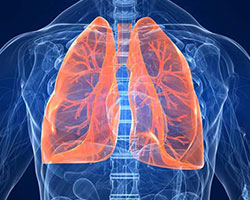
| Therapeutic Area(s) | Respiratory | Others |
Bronchiectasis affects lungs, and leads to excess accumulation of mucus due to thickening and widening of alveolar walls. Some of the most common symptoms of bronchiectasis are breathlessness, mucus coughing, tiredness, fever, chills, and wheezing sound on breathing.

| Therapeutic Area(s) | Others |
BPH is a non-cancerous medical condition, which is characterized by enlargement of prostate gland. The first phase of BPH starts in puberty, wherein the size of prostate gland becomes double.

| Therapeutic Area(s) | InfectiousOthers |
Rhinovirus infections, caused by the rhinoviruses, occurs in the upper or lower respiratory tracts. These infections are mostly acknowledged as ‘common cold’; however, they can also lead to pneumonia, sore throats, sinus infections, ear infections, and bronchiolitis.

| Therapeutic Area(s) | Others |
ALD is a X-linked monogenetically inherited from parents to offspring, with 100% penetrance in men and 65% in heterozygous women. It is a multi-system disorder which prominently affects both central and peripheral nervous system and results in blindness, seizures and hyperactivity.

| Therapeutic Area(s) | Others |
Hyperkalemia is referred to as increased levels of potassium in blood which results in cardiac arrest and death. Potassium levels above 5.1 mEq/l are considered as the hyperkalemia condition. The main causes of hyperkalemia are potassium sifting out of cells into the blood circulation, adrenal gland diseases, kidney dysfunction, uncontrolled diabetes, breakdown of muscle tissue and red blood cells.

| Therapeutic Area(s) | Others |
Achondroplasia, also termed as ACH and achondroplastic dwarfism, is an autosomal dominant genetic disorder that leads to short-stature/ limb dwarfism. It is caused due to abnormal cartilage formation. Cartilage is responsible for the development of skeleton and initial bone growth.

| Therapeutic Area(s) | Others |
Wiskott-Aldrich syndrome is a hereditary immunodeficiency disorder characterized by abnormal functioning of immune system and decreased ability to form blood clots. The abnormality in the platelets leads to easy bruising effects in case of prolonged bleeding.

| Therapeutic Area(s) | Others |
Vaginitis refers to the inflammation of vagina. It affects women of all ages but is most common during the reproductive years. Vaginitis occurs due to change in the balance of the yeast and bacteria that normally live in the vagina.

| Therapeutic Area(s) | Others |
Uterine fibroids, also known as leiomyomas or myomas, are non-cancerous growths that develop from the muscle tissue of the uterus. The size, shape, and location of fibroids can vary greatly.

| Therapeutic Area(s) | Others |
Turner syndrome is a chromosomal condition, which occurs when one of the two X chromosomes normally found in women is missing or incomplete. The disease alters the growth and development in females.

| Therapeutic Area(s) | Others |
Reperfusion injury is the damage to tissues caused when blood supply returns to the tissue after a period of ischemia or lack of oxygen (anoxia, hypoxia). It influences the patient’s outcome after myocardial infarction, stroke, cardiovascular surgery, and organ transplantation.

| Therapeutic Area(s) | Others |
Post-operative nausea and vomiting is one of the complications of anaesthesia given to the patients at the time of a surgery. The state of having unpleasant sensation subjected to desire of vomiting is known as nausea whereas, vomiting is the forceful expulsion contents present in gastrointestinal tracts.

| Therapeutic Area(s) | Others |
Mucopolysaccharidosis type III (MPS III), also known as Sanfilippo syndrome, is a progressive disorder that primarily affects brain and spinal cord (central nervous system). People with MPS III generally do not display features at birth, but they begin to show signs and symptoms of this disorder during early childhood.

| Therapeutic Area(s) | Others |
Mucopolysaccharidosis type II (MPS II), also known as Hunter syndrome, is a condition that affects various parts of the body and occurs almost exclusively in males. It is a progressively debilitating disorder; however, the rate of progression varies among affected individuals.

| Therapeutic Area(s) | Others |
Mucopolysaccharidosis type I (MPS I) is a condition that affects many parts of the body. Earlier, MPS I disorder was divided into three separate syndromes; Hurler syndrome (MPS I-H), Hurler-Scheie syndrome (MPS I-H/S), and Scheie syndrome (MPS I-S), listed from most to least severe. Later on, these were clubbed as one disease, due to overlap between each of these three syndromes.

| Therapeutic Area(s) | Others |
Ischemia reperfusion injury is a medical condition which involves tissue injury, resulting in the interruption of blood supply, and occurs when the blood supply to an area of tissue is cut off. Ischemia-related tissue injury can occur in various organs including heart and brain. During reperfusion injury, inflammatory responses occur including release of free radicals, vascular leakage, recruitment of inflammatory cells, and proteins that cause tissue destruction.

| Therapeutic Area(s) | Others |
Infertility is defined as the biological inability to conceive or contribute to conception, after having regular unprotected sex. According to the data published by the Department of Health and Human Services, approximately 10% to 15% of couples in the U.S. are infertile and have not conceived after at least one year of regular, unprotected sex

| Therapeutic Area(s) | Others |
Hypoxic-ischemic encephalopathy is a serious birth complication that causes obstruction in blood flow in brain during the prenatal, intrapartum or postnatal period. This leads to death of the child or mental disabilities in the first two years of age.

| Therapeutic Area(s) | Others |
Hypoxia is a condition characterized by inability of the tissues to receive an adequate oxygen supply. This condition is categorized into four types; hypoxic, stagnant, anaemic, fulminating, and histotoxic hypoxia.

| Therapeutic Area(s) | Others |
Hypoxia-inducible factor (HIF) inhibitor inhibits the HIF mediated hypoxic responses. HIF is a transcription factor that activate when there is a decrease in the availability of oxygen in the cellular environment. Hypoxia promotes the formation of blood vessels and this homeostatic system is required in formation of vascular system in the embryo.

| Therapeutic Area(s) | Others |
Hyperphosphatemia is a medical condition which involves increased level of serum phosphate concentration in the blood. Phosphate is required for bone and cell formation, genetic coding and energy metabolism. An individual is said to have hyperphosphatemia, if the phosphate concentration increasing beyond > 4.5 mg/dL (> 1.46 mmol/L).

| Therapeutic Area(s) | Others |
Prostate cancer occurs when cells in prostate glands grow uncontrollably. Prostate is an exocrine gland that makes the fluid part of semen and lie below the bladder in front of the rectum. As per the National Institute of Health (NIH), 10.7% of all new cases of cancer in the U.S. are of prostate cancer.

| Therapeutic Area(s) | Others |
Hormonal replacement therapy is a type of treatment wherein patients receive a course of hormones in order to get relieve from the menopause related problems. The therapy involves administration of synthetic estrogen and progesterone to overcome decreasing hormone level of women.

| Therapeutic Area(s) | Others |
Heterozygous familial hypercholesterolemia (HeFH) is an inherited genetic disorder that affects the body’s ability to control cholesterol. It is characterized by very high LDL (low density lipoprotein) cholesterol (above 190 for adults or above 160 for children) and family history of high cholesterol, heart disease or stroke.

| Therapeutic Area(s) | Others |
Mobilization is the recruitment of hematopoietic stem cells (HSC) into peripheral blood from the bone marrow following chemotherapy treatment. There are several advantages for reinfusion of autologous mobilized peripheral blood stem cells over bone marrow HSC.

| Therapeutic Area(s) | Others |
Globoid cell leukodystrophy, also known as Krabbe disease, is a genetic disorder which is characterized by decreased production of galactocerebrosidase. The symptoms observed during Krabbe disease are fever, vomiting, loss of head control, irritability and excessive crying, seizures, poor coordination of movement or stiffness, muscle spasms, changes in muscle tone, deterioration of motor function, difficulty walking and muscle weakness.

| Therapeutic Area(s) | Others |
Female sexual dysfunction (FSD) prevents the females to experience satisfaction from the sexual activity. FSD can be developed during any phase of the sexual response cycle which consists of excitement, plateau, orgasm and resolution phases.

| Therapeutic Area(s) | Others |
Female contraception prevents unwanted or unintended pregnancy. When the matured egg cell leave the ovary and ovulation begins, the chances of becoming pregnant increases. The main advantage of using contraceptives is reduction in menstrual bleeding and period pain.

| Therapeutic Area(s) | Others |
Epidermolysis bullosa (EB), is a rare genetic connective tissue skin disorder that causes blisters and allows skin to become fragile. Blisters and areas of skin loss (erosions) occur in response to minor injury or friction, such as rubbing or scratching.

| Therapeutic Area(s) | Others |
Dental pain, also known as odontogenic pain or tooth pain, arises from the teeth or their supporting structures which includes mucosa, gingivae, maxilla, mandible, or periodontal membrane. The primary location of the reflected pain (orofacial pain) is the spinal core of trigeminal system.

| Therapeutic Area(s) | RespiratoryOthers |
Viral bronchiolitis is an inflammatory disorder which is characterized by obstruction of small airways, necrosis and edema of the epithelial cells, and increased mucus production. The disease is most commonly caused by an infection caused by respiratory syncytial virus.

| Therapeutic Area(s) | RespiratoryOthers |
Pleural effusion is the fluid build-up in the pleural space and is categorized into two types which includes exudate and transudate. Transudate is usually composed of ultra-filtrates of plasma due to heart failure or cirrhosis; while, exudate is caused by inflammatory conditions.

| Therapeutic Area(s) | RespiratoryOthers |
Interstitial lung disease is a type of inflammatory disease that affects and thickens the interstitium of the lungs. The interstitium is a lace like network of the tissue that provide support to the air sacs and the capillaries in the interstitium which allows the gas exchange between the blood and alveolar tissues.

| Therapeutic Area(s) | UrologyOthers |
Urea cycle disorders (UCDs) are an inborn error of metabolism, that occurs due to the deficiencies in any of the six enzymes and two transport proteins involved in urea biosynthesis. These disorders cause inborn errors in urea synthesis that lead to an accumulation of ammonia in blood and brain.

| Therapeutic Area(s) | UrologyOthers |
Hyperoxaluria is a medical condition which involves increased oxalate in urine. The causes of hyperoxaluria include consumption of oxalate-rich foods, intestinal disorders and genetic disorders. The disease is categorized into different types which includes primary hyperoxaluria, enteric hyperoxaluria and hyperoxaluria related to eating high-oxalate foods.

| Therapeutic Area(s) | OphthalmologyOthers |
Graves’ ophthalmopathy (also called Graves’ orbitopathy; thyroid eye disease (TED); dysthyroid/thyroid-associated orbitopathy (TAO)) is an autoimmune disorder wherein ocular and orbital tissues are affected by the overproduction of thyroid hormones.

| Therapeutic Area(s) | OphthalmologyOthers |
Choroidal neovascularization is a type of medical condition in which new blood vessels are formed from choroid and extend into the subretinal space, or subretinal pigment epithelium, or a combination of both. The disease can be symptomatized by a painless loss of vision, paracentral or central scotoma, and metamorphopsia.

| Therapeutic Area(s) | OncologyOthers |
Uveal melanoma is the most common primary malignant tumour of intraocular malignancy, arises from melanocytes in the iris, and ciliary body. The most common symptoms of uveal carcinoma include blurred vision, photopsia, visual field loss, visible tumour, pain, and metamorphopsia.

| Therapeutic Area(s) | OncologyOthers |
Tuberous sclerosis, also known as tuberous sclerosis complex, is a genetic disorder characterized by the growth of numerous noncancerous (benign) tumors in many parts of the body. It can occur in the brain, skin, kidneys, and other organs, in some cases leading to significant health problems.

| Therapeutic Area(s) | OncologyOthers |
Thymic carcinoma, also known as thymomas, is a rare type of cancer that forms in the cells present in the outside surface of the thymus. Thymus is a small organ that lies in the upper chest under the breastbone.

| Therapeutic Area(s) | OncologyOthers |
Sézary syndrome, a type of cutaneous T-cell lymphoma, affects Sézary cells present in the skin, lymph nodes and blood. It accounts approximately 3 to 5 percent of cases of cutaneous T-cell lymphoma. Sézary syndrome is more prevalent in males compared to females.

| Therapeutic Area(s) | OncologyOthers |
Pontine glioma is a malignant tumour which develops from the brain stem cells. Based on the grade of growth, it is categorized into anaplastic astrocytomas and glioblastoma multiforme (GBM). Pontine glioma is more prevalent in children than adults.

| Therapeutic Area(s) | OncologyOthers |
Juvenile myelomonocytic leukemia is a rare disease that occurs mostly in the children who are under four years of age. The abnormal growth of the monocytes results in the accumulation of monocytes in the bone marrow.

| Therapeutic Area(s) | OncologyOthers |
Hypopharyngeal cancer, a type of head and neck cancer, develops in hypopharynx. Pharynx is a hollow tube about five inches long, and the bottom part of the pharynx called hypopharynx. Most of the hypopharyngeal malignancy occurs in squamous cells.

| Therapeutic Area(s) | OncologyOthers |
Breast cancer generally occurs when breast cells grow uncontrollably. Mostly, breast cancer development starts in the duct that carries milk to the nipples. Some breast cancer cells develop in milk producing glands. As per the National Institutes of Health (NIH), in the U.S., 14.6% of all new cancer cases diagnosed every year are of breast cancer.

| Therapeutic Area(s) | OncologyOthers |
Gorlin syndrome, also known as basal cell nevus syndrome, is an inherited genetic disorder characterized by multiple basal cell skin cancer. The common symptoms observed during Gorlin syndrome are calcium deposition in brain, jaw cysts, skeletal changes and developmental disability.

| Therapeutic Area(s) | OncologyOthers |
Bone metastases is a common form of cancer of the skeleton that inhabits in bone marrow and stimulates the local bone activity. In this condition, the normal bone homeostasis disrupts which leads to the development of the tumour. Some of the major symptoms observed in patients with bone metastases are bone pain, spinal cord compression, and high blood calcium levels.

| Therapeutic Area(s) | OncologyOthers |
Angioimmunoblastic T-cell lymphoma is a rare type of peripheral T-cell lymphoma which is characterized by lymphadenopathy, fever, and arthritis. The signs and symptoms associated with the disease include pleural effusion, arthritis, edema, ascites and pruritic skin rash.

| Therapeutic Area(s) | OncologyOthers |
Acquired immunodeficiency syndrome (AIDS) related cancer include those types of cancer which occurs in patients suffering from AIDS. People with AIDS are reported to be highly suspected to the occurrence of lymphomas.

| Therapeutic Area(s) | OncologyOthers |
Adrenocortical carcinoma, also known as adrenal cortex carcinoma, is a rare form of cancer that occurs at the cortex layer of the adrenal gland. There are two adrenal glands present in the human body: one at the top of each kidney.

| Therapeutic Area(s) | NeurologyOthers |
Visceral pain is the most frequent form of clinically relevant pain for those patients seek medical attention. There are several causes of visceral pain. Nociceptive pain causes direct injury of an internal organs, that leads to cardiac ischemic, and peptic ulcer. Medications for visceral pain treatment includes analgesics such as nonsteroidal anti-inflammatory drugs, paracetamol and serotonergic compounds.

| Therapeutic Area(s) | NeurologyOthers |
Tay-Sachs is a lysosomal storage disorder caused by the deficiency of vital enzymes called beta-hexosaminidase A (Hex-A). The role of Hex-A is to degrade a fatty substance or lipid called GM-2 ganglioside.

| Therapeutic Area(s) | NeurologyOthers |
Tardive dyskinesia (TD) is an involuntary neurological movement disorder caused by the use of dopamine receptor blocking drugs which are prescribed to treat certain psychiatric or gastrointestinal conditions. Long-term use of these drugs may produce biochemical abnormalities in the area of the brain known as the striatum.

| Therapeutic Area(s) | NeurologyOthers |
Major depressive disorder, also known as the clinical depression, is characterized by a constant sense of despair and hopelessness. It usually affects daily activities such as study, sleep, and eating.

| Therapeutic Area(s) | NephrologyOthers |
Lewy body dementia is a progressive brain disorder in which Lewy bodies build up in different parts of the brain that regulate cognition, movement and behavior. Lewy bodies are abnormal deposition of a protein called alpha-synuclein.

| Therapeutic Area(s) | NeurologyOthers |
Ischemic stroke develops due to an obstruction within a blood vessel which supply blood to the brain. The underlying condition for this type of obstruction is atherosclerosis, which is characterized by fatty deposition or plaque build-up in the blood vessels.

| Therapeutic Area(s) | NeurologyOthers |
Infantile spasm, also known as West syndrome, is a rare type of seizure disorder which is characterized by sudden stiffening of the body, legs and arms, and forward bending of head. It is diagnosed by physical examination, neurological examination, electroencephalography (EEG), magnetic resonance imaging (MRI), blood tests and urine tests.

| Therapeutic Area(s) | NeurologyOthers |
Hypersomnia is a medical condition which is characterized by excessive daytime sleepiness. It is categorized into primary hypersomnia and secondary hypersomnia. People with hypersomnia also suffer from other sleep-related problems, such as clear thinking problems and lack of energy.

| Therapeutic Area(s) | NeurologyOthers |
Hyperalgesia is a medical condition in which a person develops an increased sensitivity towards pain. There are several nerve pathways in the body where signals can start miscommunication with each other, resulting in hyperalgesia.

| Therapeutic Area(s) | NeurologyOthers |
Essential tremor, a nerve disorder, is characterized by involuntary tremors or shaking in different parts of the body. The most common affected areas are head, arms, hands, larynx, chin and tongue. This disease creates difficulties in daily activities such as eating, writing and dressing.

| Therapeutic Area(s) | NeurologyOthers |
Dravet syndrome is a form of severe myoclonic epilepsy that occurs in infants during their first year of age. If left untreated, it can be associated with other types of seizures, and status epilepticus. Children having Dravet syndrome are generally observed with poor cognitive skills and hyperactivity.

| Therapeutic Area(s) | NeurologyOthers |
Dementia is a group of neurological disorders which is characterized by impaired intellectual functioning. People having dementia generally lose the ability to maintain emotional control and solve the problems.

| Therapeutic Area(s) | NeurologyOthers |
Complex regional pain syndrome (CRPS) is a type of chronic pain that affects one limb of the body (hand, leg, arm, or foot). The condition generally arises due to severe injuries or malfunctioning of central and peripheral nervous systems. CRPS is categorized into two main types: CRPS-I and CRPS-II.

| Therapeutic Area(s) | NeurologyOthers |
Cognitive impairment is a medical condition in which people lose their cognitive capabilities such as thinking skills and memory. People having cognitive impairment are at high risk of developing dementia or Alzheimer’s disease. Cognitive impairment that affects memory is known as amnestic mild cognitive impairment (MCI); and the condition which affects thinking skills called nonamnestic MCI.

| Therapeutic Area(s) | NeurologyOthers |
Chronic and low back pain is a constant and dull ache and creates a sharp sensation that leaves a person harmed. It can occur due to sciatica, spondylolisthesis, spinal stenosis, traumatic injury, herniated or ruptured discs, and intervertebral disc degeneration.

| Therapeutic Area(s) | NeurologyOthers |
In cerebral palsy, the term cerebral refers to brain and palsy refers to the loss or impairment of motor function. Cerebral palsy is a group of neurological disorders that appear in infancy or early childhood, and permanently affect body movement and muscle coordination.

| Therapeutic Area(s) | NeurologyOthers |
Asperger syndrome is an autism spectrum disorder characterized by impaired communication skills and repetitive thoughts or behavior. Symptoms associated with the Asperger syndrome are lack of speech recognition skills, dislike for routine changes, avoidance of eye contacts, unusual facial expressions, and delayed motor development.

| Therapeutic Area(s) | NephrologyOthers |
Von Hippel-Lindau syndrome is a genetic disorder characterized by formation of cysts and tumors in different parts of the body. The symptoms associated with the disease depends upon the location of tumor.

| Therapeutic Area(s) | NephrologyOthers |
Focal segmental glomerulosclerosis (FSGS) is a glomerular disease, which is characterized by scarring or sclerosis in the kidney. Scarring damages the limited number of glomeruli in the initial stages. It is more common in males than in females, and is very common in African American population.

| Therapeutic Area(s) | MusculoskeletalOthers |
Tic disorder is a type of mental disorder, characterized by sudden and nonrhythmic movements. According to the World Health Organisation (WHO), this disease can be categorized into five types; transient, combined vocal and multiple motor, unspecified, and chronic motor tic disorder.

| Therapeutic Area(s) | MusculoskeletalOthers |
Spasticity is a condition in which certain muscles are continuously contracted. The constant muscle contraction causes stiffness or tightness of the muscles and can interfere with normal movement, speech and gait in a patient.

| Therapeutic Area(s) | MusculoskeletalOthers |
Polymyalgia rheumatica is an inflammatory disorder which causes stiffness and aching, and usually affects adults over the age of 50 years. This disease affects women somewhat more than men. The cause of polymyalgia rheumatica is unknown.

| Therapeutic Area(s) | MusculoskeletalOthers |
Musculoskeletal pain is a known consequence of repetitive strain, overuse, and work-related musculoskeletal disorders. These injuries include a variety of disorders that cause pain in muscles, bones, joints, or surrounding structures.

| Therapeutic Area(s) | MusculoskeletalOthers |
Intermittent claudication refers to aching or squeezing pain in thighs, buttocks or feet during exercise, due to insufficient blood circulation resulting from peripheral arterial disease. The probability of developing peripheral arterial disease increases with the age.

| Therapeutic Area(s) | MusculoskeletalOthers |
Fibrodysplasia ossificans progressiva (FOP), also known as myositis ossificans progressive, is a rare inherited connective tissue disorder characterized by abnormal bone development in ligaments, tendons, and skeletal muscles. Precisely, FOP causes the body's skeletal muscles and soft connective tissues to undergo a metamorphosis, transforming into bone, gradually locking joints and making movement difficult.

| Therapeutic Area(s) | MusculoskeletalOthers |
Fatigue is referred to as lack of energy and feeling of tiredness, both physically and mentally. There are several causes for fatigue, and it is also a common side effect of certain medicines. Symptoms associated with the fatigue are weight loss, fever, anxiety, depression, muscle weakness, vomiting, diarrhoea, and chest pain.

| Therapeutic Area(s) | MusculoskeletalOthers |
Dystonia is a type of movement disorder in which sustained muscle contraction occurs. The twisting and repetitive movements are the prominent characteristics observed in patients with this disease. Some of the early symptoms of the disease are dragging foot after running, deterioration in handwriting, foot cramps, tremor, and speech difficulties.

| Therapeutic Area(s) | MusculoskeletalOthers |
Dyskinesia is a type of movement disorder, characterized by irregular and involuntary muscle movements, and diminished voluntary movements. This disease can occur in patients taking antipsychotic medication or having severe mental disorders, such as Parkinson’s and Huntington’s disease. Levodopa-induced dyskinesia is observed in patients with Parkinson’s disease.

| Therapeutic Area(s) | MusculoskeletalOthers |
Degenerative intervertebral-disc disease is characterized by degeneration of one or more disc in the vertebrae. The function of the intervertebral disc is to provide the cushioning between vertebrae. It has been observed that intervertebral discs of the lumbar region are mostly affected.

| Therapeutic Area(s) | MusculoskeletalOthers |
Blepharospasm is an abnormal involuntary twitching of eyelid. The actual cause of the disease is still unknown but it has been observed that the disease occurs due to abnormal functioning of basal ganglion, which is responsible for the movement of muscles.

| Therapeutic Area(s) | MusculoskeletalOthers |
Ataxia is a type of movement disorder characterized by lack of muscle control or coordination of voluntary movements. Some of the symptoms observed in the patients with ataxia are poor coordination, change in speech, difficulty in swallowing, and unsteady walk.

| Therapeutic Area(s) | MetabolicOthers |
Lipodystrophy is a rare medical condition which involves problems with fat production, usage, and storage. It is categorized into two types; congenital and acquired lipodystrophy.

| Therapeutic Area(s) | MetabolicOthers |
Growth hormone deficiency is a congenital or acquired hormonal disorder, that is characterized by short stature due to lack of growth hormone.

| Therapeutic Area(s) | InfectiousOthers |
Trypanosomiasis is an infectious disease caused by the parasite of the genus Trypanosoma. African trypanosomiasis, or sleeping sickness, is caused by Trypanosoma brucei parasites in sub-Saharan Africa and American trypanosomiasis, or Chagas disease, is caused by Trypanosoma cruzi parasites in Latin America and is transmitted by the triatomine or ‘kissing’ bug.

| Therapeutic Area(s) | InfectiousOthers |
Tetanus, also known as lockjaw is a bacterial disease caused by Clostridium tetani. The bacteria are usually found in dust, soil, and manure and enter the body through breaks in the skin. The spores develop into bacteria when they enter the body.

| Therapeutic Area(s) | InfectiousOthers |
Streptococcal infections are caused by any one of several species of Streptococcus. These infections can spread through coughing or sneezing, contact with infected wounds or sores, or during a vaginal delivery.

| Therapeutic Area(s) | InfectiousOthers |
Shigella infection, also known as shigellosis, is a bacterial infection caused by a family of bacteria known as shigella. The main symptom of this infection is diarrhea, and can be passed through direct contact with the bacteria in the stool.

| Therapeutic Area(s) | InfectiousOthers |
Sepsis refers to inflammation throughout the body, as a result of immune response to fight an infection. Severe cases of sepsis can lead to septic shock.

| Therapeutic Area(s) | InfectiousOthers |
Schistosomiasis is an acute and chronic disease caused by parasitic worms of the genus Schistosoma, during routine domestic, occupational, agricultural, and recreational activities, which involves infested water exposure.

| Therapeutic Area(s) | InfectiousOthers |
Plague is an enzootic vector borne disease and a type of infectious disease, that is caused by the bacterium Yersinia pestis. This bacterium is generally found in the flea that affects human and other mammals.

| Therapeutic Area(s) | InfectiousOthers |
Mycoses, also known as fungal infections are categorized into different types based on their invasiveness. The different types of mycoses are superficial, cutaneous, subcutaneous, dimorphic systemic, and opportunistic systemic mycoses.

| Therapeutic Area(s) | InfectiousOthers |
Mumps is a transmissible disease caused by the mumps virus and is characterized by swelling of glands in neck and face. Some of the symptoms of this disease are headache, fever, tiredness, loss of appetite, and muscle ache.

| Therapeutic Area(s) | InfectiousOthers |
Middle East respiratory syndrome (MERS) is a viral respiratory disease caused by a coronavirus (MERS-CoV). Coronaviruses are a type of viruses that affect the respiratory tract of mammals, including humans. Human coronaviruses usually cause mild to moderate cold-like illnesses.

| Therapeutic Area(s) | InfectiousOthers |
Klebsiella infections include different types of infections like bloodstream infections; pneumonia; wound or surgical site infections; and meningitis, caused by the Klebsiella bacteria.

| Therapeutic Area(s) | InfectiousOthers |
Impetigo is a common bacterial infection caused by different kinds of bacteria, including streptococcus and staphylococcus. It is a contagious disease and begins with appearance of red sores on any part of the body, which eventually changes to blisters on the body.

| Therapeutic Area(s) | InfectiousOthers |
Hospital acquired pneumonia (HAP) is a lung infection that occurs during hospital stay. HAP can spread via health care workers, who may pass germs from their hands or clothes from one patient to another. This is why hand-washing, wearing gowns, and using other safety measures is so important in hospitals and other healthcare settings.

| Therapeutic Area(s) | InfectiousOthers |
Herpes labialis, also known as oral herpes, is a mouth infection which leads to the development of small, painful blisters on gums, throat, and lips. The blisters are caused by herpes simplex virus, which is highly contagious and is known to infect a larger portion of population in the U.S.

| Therapeutic Area(s) | InfectiousOthers |
Haemophilus infections are the bacterial infections including septic arthritis, meningitis, pneumonia, otitis media, sinusitis, conjunctivitis, tracheobronchitis, and acute epiglottitis caused by the Haemophilus sp.

| Therapeutic Area(s) | InfectiousOthers |
Gram-positive bacterial infections are caused by gram-positive bacteria, such as Staphylococcus aureus and Enterococcus spp. This infection sometimes become fatal in the immune-compromised person, and it is generally found in new-born.

| Therapeutic Area(s) | InfectiousOthers |
Diphtheria is an infectious and vaccine preventable disease caused by Corynebacterium diphtheriae. It is generally characterized by upper respiratory tract infection, and the most common sites for this disease are pharynx and tonsils.

| Therapeutic Area(s) | InfectiousOthers |
Cryptosporidiosis is a severe form of illness caused by parasites of various Cryptosporidium species. A person can be infected by parasites by having contaminated food and water or coming in contact with contaminated places.

| Therapeutic Area(s) | InfectiousOthers |
Community acquired pneumonia is a type of pneumonia acquired in extended care facilities. This condition can cause decreased lung function, fever, chest pain, dyspnea, and cough.

| Therapeutic Area(s) | InfectiousOthers |
Chagas disease, also known as American trypanosomiasis, is a potentially life-threatening condition caused by the protozoan parasite Trypanosoma cruzi (T. cruzi). Chagas disease occurs principally in the continental part of Latin America, and not in the Caribbean isles.

| Therapeutic Area(s) | InfectiousOthers |
Blepharitis is an inflammatory disorder of eyelids and can be categorized into two types; anterior and posterior blepharitis. The inflammation at the outside front of the eyelid is anterior blepharitis, whereas, inflammation at the inner eyelid is posterior blepharitis.

| Therapeutic Area(s) | InfectiousOthers |
Bacterial endocarditis is an infection of inner lining of the valves and heart chamber. This infection can cause serious inflammation in heart and can develop fatal complications

| Therapeutic Area(s) | ImmunologyOthers |
Wegener’s granulomatosis, also known as granulomatosis with polyangiitis, is a type of an inflammatory and autoimmune disorder that limits the blood flow to organs, leading to organ damage.

| Therapeutic Area(s) | ImmunologyOthers |
Sarcoidosis is an inflammatory disorder that affects many organs in the body, such as lymph glands and lungs. Abnormal nodules are formed in the affected organs, impacting the structure and function of the organ during sarcoidosis.

| Therapeutic Area(s) | ImmunologyOthers |
Primary immune deficiency diseases are rare and genetic disorders, that are characterized by an impaired immune system. Some of the symptoms observed in the patients with these diseases are blood disorders, autoimmune disorders, recurrent pneumonia, inflammation of internal organs, and digestive problems.

| Therapeutic Area(s) | ImmunologyOthers |
Kidney transplant rejection occurs due to an immune response toward the foreign antigens from the donor kidney. It is categorized into three different types; hyper-acute, acute, and chronic kidney transplant rejection.

| Therapeutic Area(s) | ImmunologyOthers |
Hypersensitivity is a group of undesirable reactions that are produced by normal immune systems, due to allergies and autoimmune disorders in body. These are considered as an over-reaction by the immune system and can be damaging, uncomfortable, or occasionally incurable.

| Therapeutic Area(s) | ImmunologyOthers |
Heart transplantation is the most feasible surgical transplant for the patients with end-stage heart disease. In a heart transplant surgery damaged or diseased heart is replaced with a healthy one. Transplant rejection is very common due to T cell response toward the graft or new heart.

| Therapeutic Area(s) | ImmunologyOthers |
Guillain-barre syndrome (GBS) is an immunological disorder in which the body’s immune system acts against the peripheral nervous system. In this condition, the body’s immunity starts to destroy the myelin sheath that surrounds the axons of peripheral nerves.

| Therapeutic Area(s) | ImmunologyOthers |
Autoimmune hepatitis is a chronic inflammatory disorder, characterized by autoantibodies, elevated immunoglobulin, and peritoneal inflammation. According to researchers, environmental triggers, genetic predisposition, and autoimmunity are some causes for the occurrence of this disease.

| Therapeutic Area(s) | ImmunologyOthers |
Allergy is an immune system response, that can range from mild to severe life-threatening reactions. The substances that can cause an allergy are known as allergens. Some common allergens include pollen, dust, insect stings, medications, mold spores, latex, and animal dander.

| Therapeutic Area(s) | HematologyOthers |
Septicemia, also known as bacteremia or blood poisoning, is characterized by bacterial blood infection. Septicemia occurs as a result of bacterial infection elsewhere in the body, which enters in the bloodstream.

| Therapeutic Area(s) | HematologyOthers |
Porphyria is a group of disorders including cutaneous porphyria and acute porphyria. Cutaneous porphyria affects the skin while acute porphyria affects the nervous system. Porphyria cutanea tarda is the most common type of porphyria prevalent in the U.S.

| Therapeutic Area(s) | HematologyOthers |
Iron deficiency anemia is a common type of anemia, which is a result of decreased level of haemoglobin in red blood cells (RBCs). There are several causes for iron deficiency anemia, such as inadequate iron intake, pregnancy or blood loss due to menstruation, internal bleeding, and body’s inability to absorb iron.

| Therapeutic Area(s) | HematologyOthers |
Hypereosinophilic syndrome is a group of rare blood disorders which is characterized by increased number of eosinophils. These eosinophils make their way into various tissues, causing inflammation and eventually organ dysfunction. The most commonly involved organs in hypereosinophilic syndrome include heart, lung, skin and nervous system.

| Therapeutic Area(s) | HematologyOthers |
Hemorrhagic shock, also known as hypovolemic shock, is characterized by loss of more than 20% of the blood or body fluids. This leads to improper blood supply to the body which results in the organ failure. Some of the major causes of hypovolemic shock are internal bleeding, vaginal bleeding, bleeding from accidental injuries, severe burns, excessive sweating and vomiting, and excessive diarrhea.

| Therapeutic Area(s) | HematologyOthers |
Hemophagocytic lymphohistiocytosis (HLH) is a medical condition in which the human body develops large number of activated immune cells, known as macrophages and lymphocytes. Person suffering from HLH usually develop symptoms within the first month or year of life.

| Therapeutic Area(s) | HematologyOthers |
Fanconi anemia is an inherited disease, caused by mutations in FA genes. These genes provide instructions to repair certain types of DNA damage in the human body. The cells of healthy people often repair DNA damage; however, cells affected by Fanconi anemia are not able to repair damages.

| Therapeutic Area(s) | HematologyOthers |
Fibrinogen deficiency, also known as factor I deficiency, is an inherited bleeding disorder which prevent blood clot formation in the human body. Hypofibrinogenemia, afibrinogenemia, dysfibrinogenemia and hypodysfibrinogenemia are most commonly occurring fibrinogen deficiency disorders. The symptoms of this deficiency vary based on the type of disorder.

| Therapeutic Area(s) | HematologyOthers |
Atypical hemolytic uremic syndrome (aHUS), also known as non-diarrhea - associated hemolytic uremic syndrome, is a rare disease characterized by hemolytic anemia, thrombocytopenia, acute kidney failure and uremia. The signs and symptoms of aHUS include formation of tiny blood clots in various small blood vessels of the body.

| Therapeutic Area(s) | GastroenterologyOthers |
Proctitis is characterized by the inflamed lining tissue of the inner rectum due to several medical conditions. The common causes of proctitis are sexually-transmitted infections (STIs), inflammatory bowel diseases (ulcerative colitis and Crohn’s disease), anal trauma, rectal infections, and radiation therapy for ovarian, anal, rectal, or prostate cancer.

| Therapeutic Area(s) | GastroenterologyOthers |
Pouchitis is an inflammatory disorder that develops when the ileal pouch becomes inflamed and irritated. Increased bowel frequency, bloody stool, incontinence, straining during defecation, tenesmus, lower abdominal pain and abdominal cramping or bloating are some of the problems observed in pouchitis.

| Therapeutic Area(s) | GastroenterologyOthers |
Postoperative ileus is defined as malfunctioning of intestinal motility after major abdominal surgeries. It generally affects large number of patients who are undergoing bowel resection surgery which causes significant discomfort and extend hospital stay. Postoperative ileus affects small intestine, stomach and large intestine. The disease is broadly categorized into primary and secondary type.

| Therapeutic Area(s) | GastroenterologyOthers |
Opioid-induced bowel dysfunction occurs due to excessive consumption of opioids to manage pain. Opioid is generally use in the clinical management of pain which affects gastrointestinal tract and causes several types of side-effects. Opioid induced constipation is the most common side-effect occur due to excessive usage of opioids.

| Therapeutic Area(s) | GastroenterologyOthers |
Hyperinsulinemia is a medical condition which is characterized by increased amount of insulin in blood. The primary cause of the disease is insulin resistance, which can also result in the development of type 2 diabetes. Insulinoma and nesidioblastosis are some other causes of hyperinsulinemia.

| Therapeutic Area(s) | GastroenterologyOthers |
Hepatorenal syndrome (HRS) is a reversible functional renal impairment, that occurs in patients with advanced liver cirrhosis or those with fulminant hepatic failure. It is characterized by a marked reduction in glomerular filtration rate and renal plasma flow, in the absence of other causes of renal failure.

| Therapeutic Area(s) | GastroenterologyOthers |
Hepatitis E is a liver disease caused by infection due to a virus known as hepatitis E virus (HEV). This disease can cause swelling in liver. Some of the common symptoms are mild fever, feeling of tiredness, feeling sick to stomach, and belly pain.

| Therapeutic Area(s) | GastroenterologyOthers |
Gastroenteritis, also known as infectious diarrhoea, is an inflammatory disease caused by bacteria, viruses, or parasites through contaminated food and water.

| Therapeutic Area(s) | GastroenterologyOthers |
Functional dyspepsia, also known as non-ulcer dyspepsia, is a gastrointestinal disorder that causes peristalsis and sensations in the upper digestive tract. Inflammation of the stomach or duodenum, excessive acid secretion, psychological factors, lifestyle and diet influences, food allergies, Helicobacter pylori infection, and side effects of medications are some causes of functional dyspepsia.

| Therapeutic Area(s) | GastroenterologyOthers |
Fecal incontinence, also known as accidental bowel leakage, refers to the inability of a person to control bowel movement including stools and mucus. Urge incontinence is a common form of fecal incontinence that occur due to pelvic muscle injury or nerve damage.

| Therapeutic Area(s) | GastroenterologyOthers |
Familial adenomatous polyposis (FAP) is a genetic disorder, characterized by the development of adenomatous colon polyps in the intestinal tract, resulting in colon cancer. The disease is diagnosed when more than 100 adenomatous colon polyps are developed in a person.

| Therapeutic Area(s) | GastroenterologyOthers |
Exocrine pancreatic insufficiency (EPI) is the inability of pancreas to produce enough enzymes for the proper breakdown and absorption of nutrients. The common causes of EPI are damage to pancreas, inflammation of pancreas, pancreatic surgery, and inherited disorders like Crohn’s disease and celiac disease.

| Therapeutic Area(s) | GastroenterologyOthers |
Diarrhoea involves loose, frequent, and watery bowel movements, caused by gastrointestinal infections, medicines, and irritable bowel syndrome. Rotaviruses are the most common viral causative agents for this

| Therapeutic Area(s) | GastroenterologyOthers |
Crigler-Najjar syndrome is a severe condition, characterized by the high concentration of bilirubin (a toxic substance) in blood. Bilirubin is produced by liver due to the breakdown of red blood cells.

| Therapeutic Area(s) | GastroenterologyOthers |
Biliary cirrhosis is an immune mediated chronic liver disease, in which small bile ducts are inflamed or injured, due to the building-up of bile level. If left untreated, biliary cirrhosis can lead to liver failure. In this disease, the immune system becomes overactive and attacks healthy bile ducts.

| Therapeutic Area(s) | GastroenterologyOthers |
Abdominal pain is a sensation of distress or discomfort in the abdominal region. Some common related condition that can cause abdominal pain are chronic pelvic pain, constipation, gastritis, irritable bowel syndrome, diverticulitis, and menstrual pain.

| Therapeutic Area(s) | DermatologyOthers |
Vitiligo is a type of autoimmune disorder which is characterized by white patches on skin. This is mainly due to destruction of melanocytes (cells responsible for pigmentation in the skin). People with certain autoimmune diseases are more prone to developing vitiligo. Some of the most common symptoms of the disease are occurrence of white patches on the hands, feet, arms, and lips.

| Therapeutic Area(s) | DermatologyOthers |
Venous leg ulcers (VLUs) are defined as open lesions between the knee and ankle joint. It is the most common cause of leg ulcers, accounting for 60-80% of the total reported cases. The prevalence of VLUs is between 0.18% and 1%, which increases with age and can increased to 4% in patients aged 65 or above.

| Therapeutic Area(s) | DermatologyOthers |
Prurigo is a group of skin diseases characterised by intensely pruritic, and difficult to treat. There are two conditions associated with prurigo which includes nodular prurigo and papular prurigo. Nodular prurigo is characterized by symmetrical lesions usually on the distal limbs; while, papular prurigo represents smaller lesions which affect cape area.

| Therapeutic Area(s) | DermatologyOthers |
Keratitis is an inflammatory eye disorder which affects cornea. It is mainly caused by virus, bacteria, amoebic, and parasitic pathogens. Red eye, pain, excessive tearing, impaired eyesight, and photophobia are some of the symptoms associated with the disease. Keratitis is categorised into two types: acute keratitis and chronic keratitis.

| Therapeutic Area(s) | DermatologyOthers |
A keloid is characterized by abnormal proliferation of scar tissue which occurs at the site of cutaneous injuries. Acne scars, burns, scratches, ear piercing, chickenpox scars, surgical incision sites and vaccination sites are some of the major causes of keloids.

| Therapeutic Area(s) | DermatologyOthers |
Hidradenitis suppurativa is a dermatological disorder which develops pimples, folliculitis, boils and deep-acne like cysts and blackheads. The pimples grow deeply in the skin and becomes painful in severe cases. Smoking and obesity are the most common risk factors of hidradenitis suppurativa. It is more prevalent in women compared to men. Hidradenitis suppurativa generally occurs in areas like underarms, groin, buttocks, upper thighs and breasts.

| Therapeutic Area(s) | DermatologyOthers |
Dermatomyositis is a rare inflammatory disease which can occur in any age. However, it is most common in children age group of 5 to 15 years, and people of late 40's and early 60's. Some of the most common symptoms observed in patients with dermatomyositis are erythema, inflammatory myopathy, myalgia, progressive muscle weakness, eyelid abnormality, and periorbital edema.

| Therapeutic Area(s) | DermatologyOthers |
Dermatomycoses is a group of disease which is caused by dermatophytes, a fungus, which generally invade into keratinized tissues such as nails, skin and hairs. The causative agents for dermatomycoses include organisms of three genera, Microsporum, Trichophyton, and Deuteromycetes. Dermatomycoses is a contagious disease that can be acquired from infected animals.

| Therapeutic Area(s) | DermatologyOthers |
Aging is a process of becoming older, that brings physical, social and psychological changes to the body. In addition, aging is one of the major risk factors for the occurrence of many diseases. The cause of aging is still unknown; however, some proposed theories such as damage accumulation and programmed aging, are heading the hypothetical process of aging.

| Therapeutic Area(s) | DermatologyOthers |
Actinic keratosis is a type of dermatological disorder characterized by thick and scaly patch of skin, that can lead to cancer. This disease generally occurs at the areas that are exposed to the sun and is common in people with fair skin.
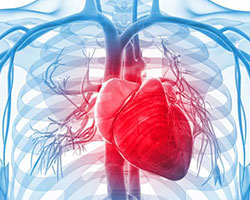
| Therapeutic Area(s) | CardiovascularOthers |
Ventricular arrhythmia is a cardiovascular disease that is characterized by slow beats (bradycardia) and fast beats (tachycardia). Ventricular arrhythmia generally occurs in the lower chamber of the heart.

| Therapeutic Area(s) | CardiovascularOthers |
Telangiectasias are dilated blood vessels located near the surface of skin or mucous membranes. These often appear as fine pink or red lines, which temporarily whiten under pressure. Although this disease can be developed in healthy individuals, telangiectasias is known to be a prime feature of systemic and limited scleroderma and dermatomyositis.

| Therapeutic Area(s) | CardiovascularOthers |
Left ventricular dysfunction is a condition which is characterized by dilation and vasoconstriction of left ventricle, which eventually lead to heart failure. Some common symptoms observed in this disease are insomnia, fatigue, and anxious or depressed mood.

| Therapeutic Area(s) | CardiovascularOthers |
Ischemic cardiomyopathy is a type of dilated cardiomyopathy, in which the capability of heart to pump blood is reduced. This causes lack of blood supply to heart muscles which result in the occurrence of coronary artery disease.

| Therapeutic Area(s) | CardiovascularOthers |
Hypotension refers to a low blood pressure condition, which can result in dizziness, fainting or shock. There are several types of hypotension including orthostatic, neutrally mediated, and severe hypotension that are linked to shock.

| Therapeutic Area(s) | CardiovascularOthers |
Hypertrophic cardiomyopathy, also known as an unexplained left ventricular hypertrophy, can lead to the sudden cardiac death. Some of the symptoms observed in patients suffering from this disease are chest pain, shortness of breath, orthostasis, palpitation, syncope, and presyncope. This disease can be diagnosed by imaging techniques, such as echocardiography and magnetic resonance imaging.

| Therapeutic Area(s) | CardiovascularOthers |
Essential hypertension, also known as idiopathic hypertension, is a kind of high blood pressure for which a secondary cause is not known. It is also known as primary hypertension and can eventually lead to atherosclerosis, stroke, heart attack, heart failure, eye and kidney damage.

| Therapeutic Area(s) | CardiovascularOthers |
Dilated cardiomyopathy is a type of cardiovascular disease, that is characterized by left systolic dysfunction and ventricular enlargement. This condition is found to be associated with cardiac arrhythmias, congestive heart failure, and thromboembolic disease.

| Therapeutic Area(s) | CardiovascularOthers |
Behcet Disease (Behçet disease) is an inflammatory disorder that affects blood vessels of various body parts including mouth, genitals, skin, and eyes. Some of the symptoms of this disease are mouth sores, skin sores, genital sores, uveitis, joint swelling, abdominal pain, headache, and fever.